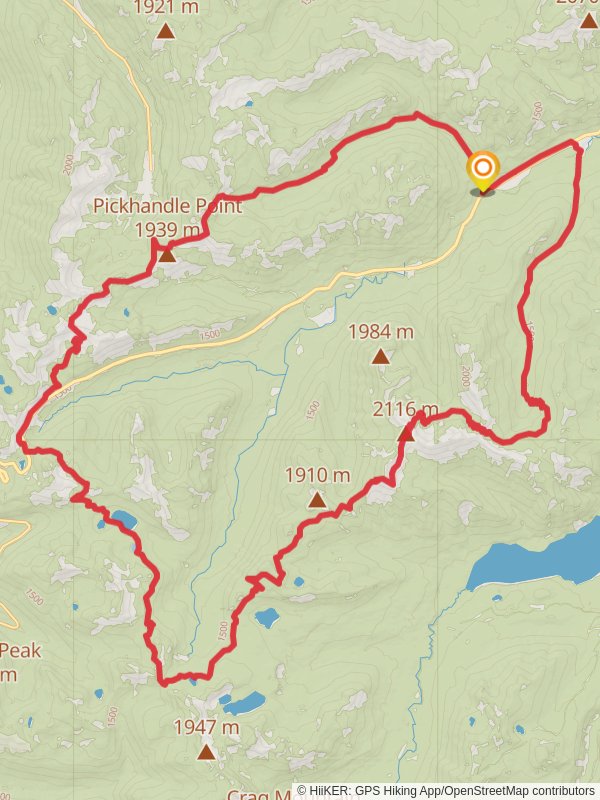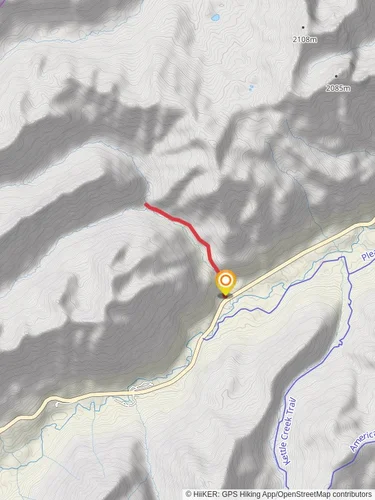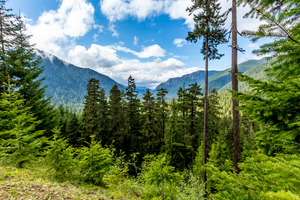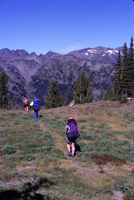60.8 km
~3 day
2463 m
“Embark on the Chinook Pass Loop for an epic trek through the majestic Washington Cascades.”
Embarking on the Chinook Pass Loop, hikers will traverse approximately 61 kilometers (around 38 miles) of diverse and challenging terrain with an elevation gain of roughly 2400 meters (nearly 7874 feet). This loop, known for its difficulty, begins near Yakima County, Washington, and offers a comprehensive experience of the Cascade Range's rugged beauty.
Getting to the Trailhead
To reach the starting point of the Chinook Pass Loop, hikers can drive to the trailhead located near the crest of Chinook Pass on State Route 410. For those relying on public transportation, options are limited, and it's advisable to check local resources for the latest schedules and routes that may drop you off at points near the trailhead. From there, a taxi or a pre-arranged shuttle service may be necessary to reach the starting point.
Navigating the Trail
Hikers should prepare to use HiiKER for navigation, as the app provides detailed maps and trail information that are invaluable for a trek of this magnitude. The loop itself is a combination of several trails, including sections of the Pacific Crest Trail (PCT), which means that at times, you'll be walking in the footsteps of long-distance thru-hikers.
Landmarks and Natural Features
As you set out, the trail will take you through dense forests of Douglas fir and western hemlock, opening up to subalpine meadows that burst with wildflowers in the late spring and summer. The loop offers stunning views of Mount Rainier, especially from the Sourdough Gap, which you'll reach after a significant climb.
Continuing on, you'll encounter the American River and Dewey Lake, which are perfect spots for a rest and to replenish water supplies—be sure to treat any water before drinking. The trail then ascends to the crest of the Cascades, providing panoramic vistas that include the Norse Peak Wilderness and the Goat Rocks.
Wildlife and Flora
The region is home to a rich array of wildlife, including black bears, mountain goats, and marmots. Hikers should be knowledgeable about wildlife safety, including proper food storage and what to do in the unlikely event of an encounter with a bear.
Historical Significance
The area around Chinook Pass is steeped in history, with the nearby Naches Pass Trail being a historic wagon trail used by settlers during the westward expansion. The Chinook Pass itself is named after the Chinook people, a Native American tribe that once inhabited the region.
Seasonal Considerations
The best time to hike the Chinook Pass Loop is from late July to early October when the snow has melted, and the trails are most accessible. Snow can linger on higher elevations well into the summer, so it's essential to check current trail conditions before setting out.
Preparation and Safety
Given the trail's difficulty and remote nature, hikers should be well-prepared with the ten essentials, have a solid plan, and leave an itinerary with someone off-trail. Weather can change rapidly in the mountains, so layered clothing and rain gear are a must. Also, be prepared for the physical demands of the trail, which include steep ascents and descents.
Conclusion
By taking the necessary precautions and preparing adequately, hikers can look forward to an unforgettable adventure on the Chinook Pass Loop, immersed in the natural splendor of the Washington Cascades.
Chinook Pass Loop passes through these parks:
Reviews
User comments, reviews and discussions about the Chinook Pass Loop, Washington.
5.0
average rating out of 5
5 rating(s)









